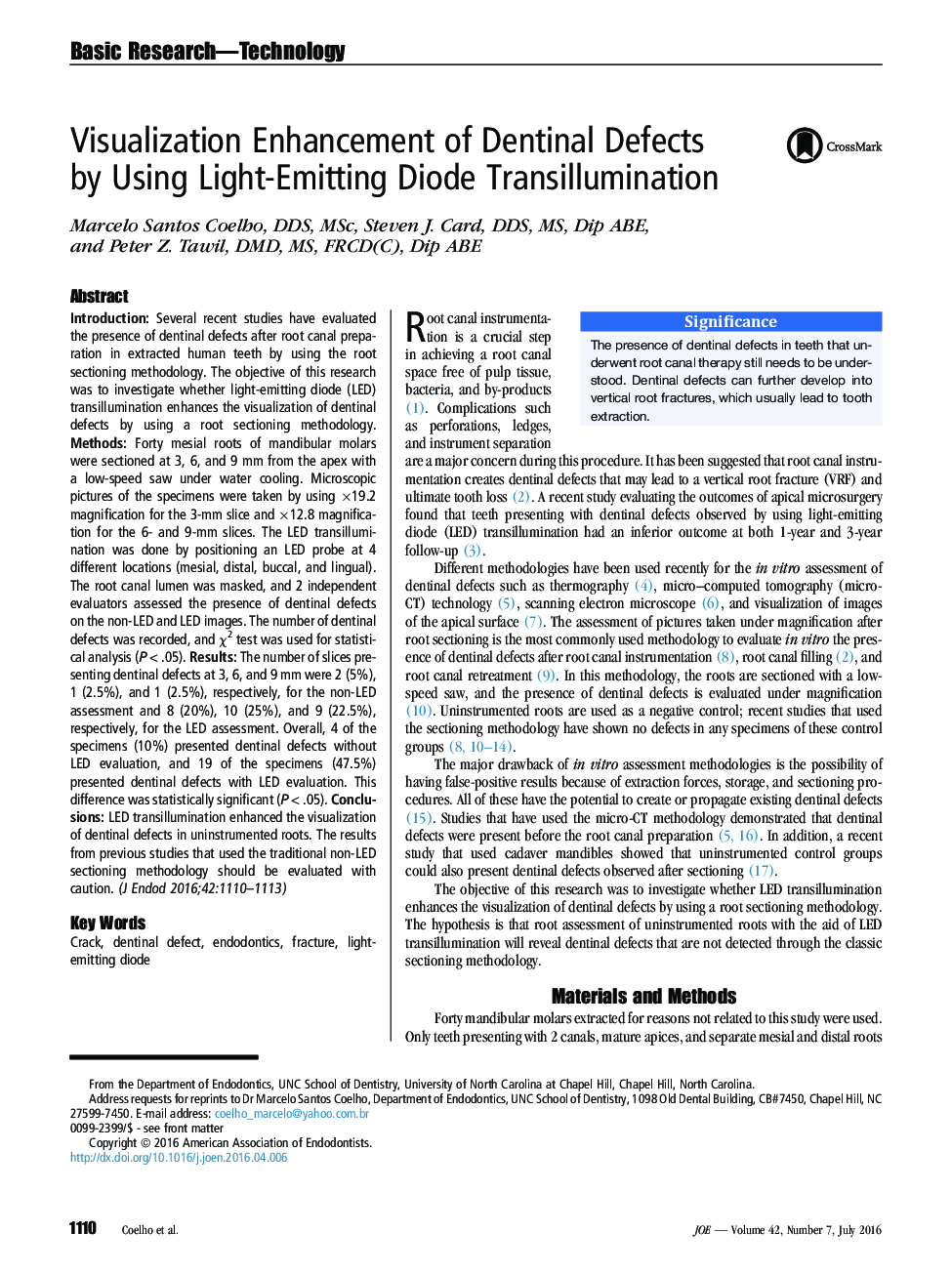| Article ID | Journal | Published Year | Pages | File Type |
|---|---|---|---|---|
| 3147650 | Journal of Endodontics | 2016 | 4 Pages |
•Root sectioning is the most common methodology to evaluate dentinal defects.•Drawback of this methodology is false-positive results due to extraction, storage, and sectioning.•LED transillumination improved dentinal defect detection in uninstrumented roots.
IntroductionSeveral recent studies have evaluated the presence of dentinal defects after root canal preparation in extracted human teeth by using the root sectioning methodology. The objective of this research was to investigate whether light-emitting diode (LED) transillumination enhances the visualization of dentinal defects by using a root sectioning methodology.MethodsForty mesial roots of mandibular molars were sectioned at 3, 6, and 9 mm from the apex with a low-speed saw under water cooling. Microscopic pictures of the specimens were taken by using ×19.2 magnification for the 3-mm slice and ×12.8 magnification for the 6- and 9-mm slices. The LED transillumination was done by positioning an LED probe at 4 different locations (mesial, distal, buccal, and lingual). The root canal lumen was masked, and 2 independent evaluators assessed the presence of dentinal defects on the non-LED and LED images. The number of dentinal defects was recorded, and χ2 test was used for statistical analysis (P < .05).ResultsThe number of slices presenting dentinal defects at 3, 6, and 9 mm were 2 (5%), 1 (2.5%), and 1 (2.5%), respectively, for the non-LED assessment and 8 (20%), 10 (25%), and 9 (22.5%), respectively, for the LED assessment. Overall, 4 of the specimens (10%) presented dentinal defects without LED evaluation, and 19 of the specimens (47.5%) presented dentinal defects with LED evaluation. This difference was statistically significant (P < .05).ConclusionsLED transillumination enhanced the visualization of dentinal defects in uninstrumented roots. The results from previous studies that used the traditional non-LED sectioning methodology should be evaluated with caution.
